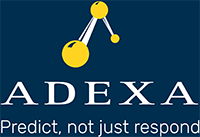Everything You Want to Know About Attribute Based Planning
Attributes can be a difficult concept because it’s the term for describing an object, place, or living thing. Within supply chains, attributes describe and define the specific properties of goods. Every object in the supply chain — from regions to resources, customer, and suppliers — have their own specific attributes for goods. Attribute based planning and forecasting can be used to provide better customer service and data management by drastically reducing the number of SKUs available for products that have slight variations.
Attributes by themselves are just properties but attribute-based planning means using these properties as constraints to deliver an accurate plan.
What are attributes?
Attributes are properties of a person, place or thing. When it comes to your supply chain, an attribute can define the skill of an operator, quality or carbon footprint of a product, customer or supplier. They can define the range of certain measurements related to raw materials or intermittent products as well as finished goods. They can define the degree by which a piece of equipment is aging and losing efficiency. They can also define tariffs related to a region or temperature variations tolerated by a product or the reliability of a transportation company or supplier. Since there are no limits to the properties that can define an object, there are no limits to the number of attributes that are defined.
The question is: are attributes just a field in the database or can they be used as intelligent constraints to deliver the right product to the right customer at the right time and place?
What is attribute-based planning (APB)?
Attribute based planning (ABP) is the process by which the properties of objects are taken into account when a plan is being generated. The attributes are used by being automatically added to an order in creating a dynamic BOM and routing for a specific product.
Where do attributes come from?
Attributes are everywhere. In spreadsheets, in databases, in your PLM system, in systems of record such as ERP and MES and process control units as well as within people’s heads! It’s a means of qualifying objects in a way that is easily understood by most individuals.
How can I reduce the number of SKUs using attributes and attribute based planning?
When attribute based planning is used, a generic BOM and routing is used for a specific product and the attributes of that product are used by the system to automatically build a dynamic BOM and routing in order to process that specific order. Without attribute based planning, a separate BOM and routing needs to be created for each product within a specific order, creating an exponential number of SKUs for each possible combination. Attribute based planning cuts down the SKU possibilities, reducing the amount of data management and maintenance that would otherwise need to be performed.
Attributes require only a generic definition of the products. If a new version of the same product becomes available, specific attributes of the new version can be added to the attribute based planning software rather than require additional SKUs. The original product SKU can then be used with the new attributes. Products that are engineered to order or made to order can greatly benefit from this feature.
However other industries, such as high-tech where customers may qualify 2nd tier suppliers, the use of attributes become critical. Industries where use of substitute materials or alternate suppliers or even alternate resource are possible can also greatly benefit from this approach since one does not need to define a new routing or BOM for every possible combination. ABP reduces the number of SKUs by multiple orders of magnitude.
Can attributes make data management less cumbersome and my life easier?
Yes, attributes eliminate the need for creating an excess number of SKUs for the same product that contains minor variations. For example, if you have a device with two different specs for temperature, two SKUs would be needed without attribute based planning. Attribute based planning defines the property of each variation using one generic SKU and then the system automatically attaches dynamic BOM and routing based on the differing attributes. To this end, the master data becomes a lot smaller and much easier to maintain and use. It helps to scale the system and require a lot less memory and maintenance.
Is it possible to plan without attribute based planning?
Yes, however as mentioned earlier, one needs to accommodate an exponential number of SKUs and combinations of BOMs and routings without attribute based planning. The job of maintaining the master data becomes painstakingly hard.
Is attribute based planning for specific industries or can any organization benefit from it?
Attribute based planning and forecasting is useful in almost all industries where there are variations of the same product or where options can be specified. Attributes are also used to plan not just for profit optimization but also to plan by optimizing the use of certain material such as rare earth material, a commodity such as oil, or minimal carbon production of a plant.
Attribute based planning used in machine learning and generation of supply chain digital twin
Earlier we talked about the use of attributes as intelligent constraints. What this means is that attributes can be used to formulate business and/or production rules in which the outcome is either true or false. To this end, attributes form an AI expert system that keeps reacting to the environment by learning additional rules about the business and operations.
The following example illustrates the power of attributes:
IF customer=Important, THEN Resource1 = High quality AND supplier = S123, AND Factory = F123 OR F456.
It can be seen that almost any business rule can be defined in order for the system to find the right solution while planning the supply chain or the production. What is even more important is that the rules can be changed by the users as the business changes, thus making the system very flexible and adaptable.
There is more: attribute based forecasting can also help machine learning algorithms to find cause and effect relationships and unknown patterns. For example, the system may learn over time that a supplier from a certain region for a given product and quantity is always late in the months of February and June, and adjust accordingly or make you aware. The more attributes there are, the more insight the system can provide and reveal hidden patterns in the supply chain as they develop so you have better forecasting of demand.
Attribute based planning and your S&OE and S&OP
At Adexa, we consider the supply chain as a holistic endeavor rather than individual aspects to be puzzled together. Our software provides an outlook on your day-to-day operations, tying attribute based planning and forecasting to your S&OE and S&OP through the use of a true digital twin. See how we can help simplify your supply chain network so your organization can focus on what’s truly important.


